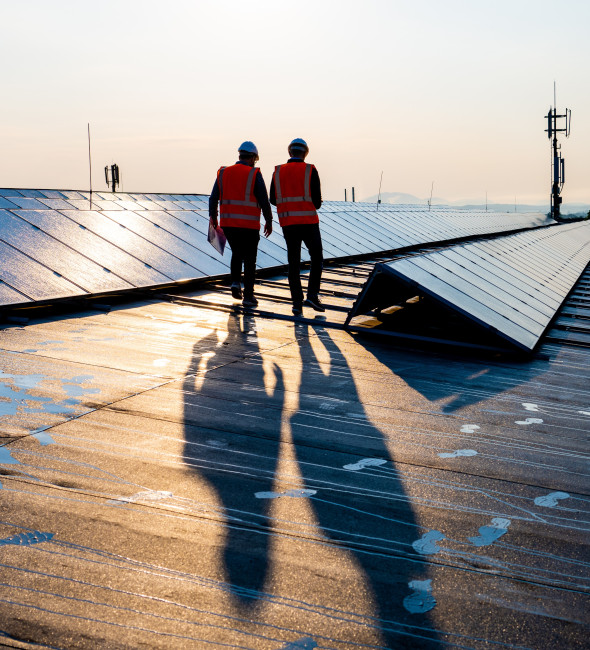Decarbonizing the world’s buildings
To achieve this goal, it will be necessary to decarbonize the energy used in buildings. To do this, we must ensure that every energy service we use in our buildings is electrified as much as possible, using the most energy-efficient appliances and equipment, and the electricity used comes from carbon-free sources. This means that while we construct buildings to be zero-carbon and optimize building energy consumption, we also need to switch heating, cooling and cooking equipment from fossil-fueled power to zero-carbon electricity to reduce emissions from energy use in buildings.
The importance of zero-carbon electricity for decarbonizing buildings
A shift of this magnitude will require a zero-carbon electricity grid. Additionally, an increase in on-site and local off-site renewables such as rooftop solar power or community wind turbines can also help guarantee carbon-free power, especially while electricity from the grid is being decarbonized.
Key technologies for decarbonizing buildings
The technologies needed to decarbonize buildings already exist and are fairly mature. For instance, energy-efficient electric heat pumps have become a key technology for decarbonizing space and water heating. Most active cooling is already achieved through electric fans, evaporative coolers and air conditioners (which are technically a type of heat pump). Reversible heat pumps can supply both heating and cooling.
However, many heat pumps and air conditioners use refrigerants that are known to contribute to global warming. It is therefore important that all newly installed heat pumps and air conditioners use alternative refrigerants to reduce their climate impact.
Other technologies appropriate for heating and cooling include district heating, district cooling and solar thermal heating for hot water. To be sustainable, both district heating and district cooling must rely on a zero-carbon thermal energy source.
The use of biomass as a fuel source is a Paris Agreement-compatible option only when its sustainability is assured and life cycle emissions are near zero. Traditional biomass is also used as a cooking fuel, especially in developing countries, but it has substantial negative effects on health and the environment. Many buildings use fossil gas stoves for cooking, which in addition to emitting climate-damaging carbon dioxide and methane when burned, can also leak methane and hazardous compounds such as benzene even when turned off. Shifting to electricity for heating and cooking — especially highly efficient induction stoves — will eliminate the harmful emissions from both of these sources.
Challenges for adoption of sustainable solutions for building heating, cooling and cooking
There are challenges in scaling up these technologies for heating, cooling and cooking, particularly in existing buildings where retrofits to improve energy efficiency often come with high upfront costs. Behavior change is also necessary, in particular for cooking, where cooking systems can be culturally important and strong preferences for certain cooking equipment exist.
Watch this recording where global leaders discuss the current state of our cities and the built environment, as well as what action is needed in this critical decade and beyond.


